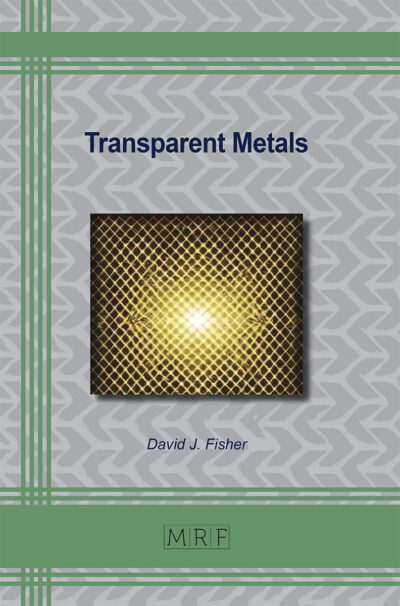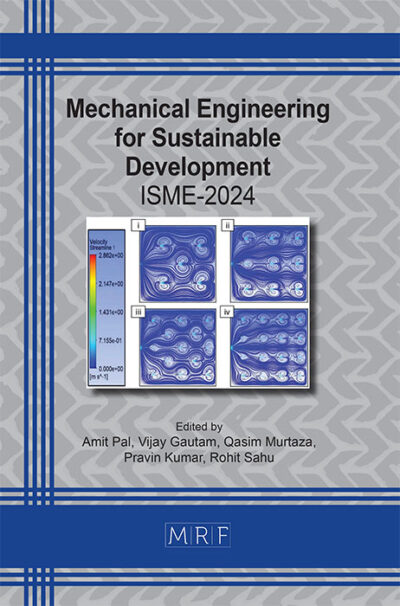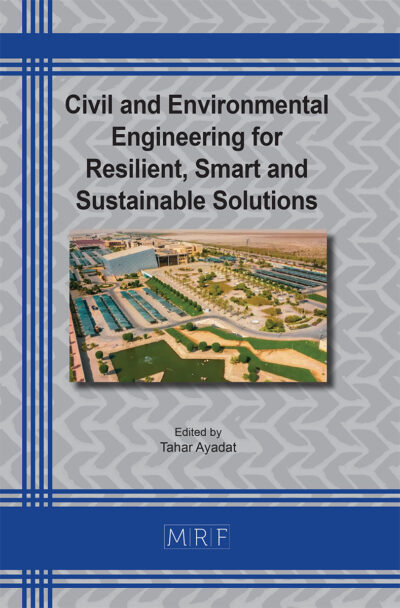Simultaneous brine and CO2 utilization in construction material production: A life cycle assessment
Aiste ZUKAITYTE, Roneta CHALIULINA, Jose-Luis GALVEZ-MARTOS, Ammar ELHOWERIS, Yousef ALHORR
Abstract. Economic development has led to a significant increase in CO2 emissions, resource depletion, and freshwater demand. In arid regions, seawater desalination has been employed as a reliable source of freshwater. However, the environmental challenges associated with reject brine management have been increasingly scrutinized for their adverse effects on adjacent ecosystems. Recent research efforts have explored the potential for simultaneous treatment of CO2 emissions and reject brine, by recovering valuable minerals and converting waste into a resource. This study presents a life cycle assessment (LCA) of construction material produced using industrial byproducts locally sourced in the Gulf region. The production process involves two main stages: CO2 absorption from flue gas in an alkaline solution and subsequent ex-situ mineralization. Desalination reject brine is used as a steady source of dissolved Ca²⁺ and Mg²⁺, contributing to a circular. The developed construction product exhibits superior mechanical performance compared to industrial standards. The presented LCA examines environmental impacts, including climate change, resource depletion, and water use. The new material contains approximately 30 wt.% sequestered CO₂. The total quantified environmental impacts include 0.391 kg CO₂ eq. for climate change, 0.23 kg oil eq. for fossil depletion, and 0.021 m³ for freshwater consumption per kilogram of plasterboard. These findings underscore the potential of this innovative process to provide sustainable construction alternatives while mitigating the impacts of CO₂ emissions and waste from desalination.
Keywords
Nesquehonite, Magnesium Carbonates, Mineralization, Sustainable Construction, Carbon Capture, Life Cycle Assessment, Brine, Desalination
Published online 2/25/2025, 9 pages
Copyright © 2025 by the author(s)
Published under license by Materials Research Forum LLC., Millersville PA, USA
Citation: Aiste ZUKAITYTE, Roneta CHALIULINA, Jose-Luis GALVEZ-MARTOS, Ammar ELHOWERIS, Yousef ALHORR, Simultaneous brine and CO2 utilization in construction material production: A life cycle assessment, Materials Research Proceedings, Vol. 48, pp 784-792, 2025
DOI: https://doi.org/10.21741/9781644903414-85
The article was published as article 85 of the book Civil and Environmental Engineering for Resilient, Smart and Sustainable Solutions
![]() Content from this work may be used under the terms of the Creative Commons Attribution 3.0 license. Any further distribution of this work must maintain attribution to the author(s) and the title of the work, journal citation and DOI.
Content from this work may be used under the terms of the Creative Commons Attribution 3.0 license. Any further distribution of this work must maintain attribution to the author(s) and the title of the work, journal citation and DOI.
References
[1] A. O. Acheampong, “Economic growth, CO 2 emissions and energy consumption: What causes what and where?,” 2018. https://doi.org/10.1016/j.eneco.2018.07.022.
[2] “CO2 Emissions in 2023 – Analysis – IEA.” Accessed: Aug. 03, 2024. [Online]. Available: https://www.iea.org/reports/co2-emissions-in-2023
[3] M. H. El-Naas, A. F. Mohammad, M. I. Suleiman, M. Al Musharfy, and A. H. Al-Marzouqi, “A new process for the capture of CO2 and reduction of water salinity,” Desalination, vol. 411, pp. 69–75, Jun. 2017. https://doi.org/10.1016/J.DESAL.2017.02.005.
[4] F. Abdul Rahman et al., “Pollution to solution: Capture and sequestration of carbon dioxide (CO 2 ) and its utilization as a renewable energy source for a sustainable future,” 2017. https://doi.org/10.1016/j.rser.2017.01.011.
[5] J. Mustafa, A. A. H. I. Mourad, A. H. Al-Marzouqi, and M. H. El-Naas, “Simultaneous treatment of reject brine and capture of carbon dioxide: A comprehensive review,” Desalination, vol. 483, p. 114386, Jun. 2020. https://doi.org/10.1016/J.DESAL.2020.114386.
[6] T. M. Missimer, R. G. Maliva, and U. A. Whitaker, “Environmental issues in seawater reverse osmosis desalination: Intakes and outfalls,” 2017. https://doi.org/10.1016/j.desal.2017.07.012.
[7] J. Jaime, S. Alonso, and N. Melián-Martel, “Environmental Regulations-Inland and Coastal Desalination Case Studies,” 2018. https://doi.org/10.1016/B978-0-12-809240-8.00010-1.
[8] A. Panagopoulos, K. J. Haralambous, and M. Loizidou, “Desalination brine disposal methods and treatment technologies – A review,” Science of The Total Environment, vol. 693, p. 133545, Nov. 2019. https://doi.org/10.1016/J.SCITOTENV.2019.07.351.
[9] H. Ruan et al., “Capturing CO2 with NaOH solution from reject brine via an integrated technology based on bipolar membrane electrodialysis and hollow fiber membrane contactor,” Chemical Engineering Journal, vol. 450, p. 138095, Dec. 2022. https://doi.org/10.1016/J.CEJ.2022.138095.
[10] I. Ihsanullah, J. Mustafa, A. M. Zafar, M. Obaid, M. A. Atieh, and N. Ghaffour, “Waste to wealth: A critical analysis of resource recovery from desalination brine,” Desalination, vol. 543, p. 116093, Dec. 2022. https://doi.org/10.1016/j.desal.2022.116093.
[11] R. Chaliulina, “Precipitated Calcium Carbonates Recycling Carbon Dioxide and Industrial Waste Brines.”
[12] R. Chaliulina, “Utilisation of Carbon Capture and Mineralisation Products: Considering Monohydrocalcite as a Potential Functional Filler,” OAlib, vol. 09, no. 12, pp. 1–19, 2022. https://doi.org/10.4236/oalib.1109436.
[13] R. Chaliulina, “On Sustainable Production of CaCO3 via Monohydrocalcite—A Carbon Capture and Mineralisation Product from Waste Brines,” Green and Sustainable Chemistry, vol. 13, no. 01, pp. 34–61, 2023. https://doi.org/10.4236/gsc.2023.131004.
[14] A. A-HI Mourad, A. F. Mohammad, A. H. Al-Marzouqi, M. H. El-Naas, M. H. Al-Marzouqi, and M. Altarawneh, “CO 2 capture and ions removal through reaction with potassium hydroxide in desalination reject brine: Statistical optimization,” Chemical Engineering & Processing: Process Intensification, vol. 170, p. 108722, 2022. https://doi.org/10.1016/j.cep.2021.108722.
[15] R. Chaliulina, J.-L. Galvez-Martos, A. Hakki, A. Elhoweris, J. Mwanda, and Y. Al-Horr, “Eco materials from CO 2 capture: Compressive strengths of a plasterboard alternative,” 2021. https://doi.org/10.1016/j.conbuildmat.2021.125276.
[16] J. Morrison, G. Jauffret, J. L. Galvez-Martos, and F. P. Glasser, “Magnesium-based cements for CO2 capture and utilisation,” Cem Concr Res, vol. 85, pp. 183–191, Jul. 2016. https://doi.org/10.1016/J.CEMCONRES.2015.12.016.
[17] J.-L. Gálvez-Martos et al., “Eco-efficiency of a novel construction material produced by carbon capture and utilization,” Journal of CO2 Utilization, vol. 49, p. 101545, Jul. 2021. https://doi.org/10.1016/j.jcou.2021.101545.
[18] J.-L. Galvez-Martos, A. Elhoweris, J. Morrison, and Y. Al-horr, “Conceptual design of a CO2 capture and utilisation process based on calcium and magnesium rich brines,” Journal of CO2 Utilization, vol. 27, pp. 161–169, Oct. 2018. https://doi.org/10.1016/j.jcou.2018.07.011.
[19] “ISO 14040:2006 – Environmental management — Life cycle assessment — Principles and framework.” Accessed: May 29, 2024. [Online]. Available: https://www.iso.org/standard/37456.html
[20] “ISO 14044:2006 – Environmental management — Life cycle assessment — Requirements and guidelines.” Accessed: May 29, 2024. [Online]. Available: https://www.iso.org/standard/38498.html
[21] G. Wernet, C. Bauer, B. Steubing, J. Reinhard, E. Moreno-Ruiz, and B. Weidema, “The ecoinvent database version 3 (part I): overview and methodology,” International Journal of Life Cycle Assessment, vol. 21, no. 9, pp. 1218–1230, Sep. 2016. https://doi.org/10.1007/S11367-016-1087-8/METRICS.












